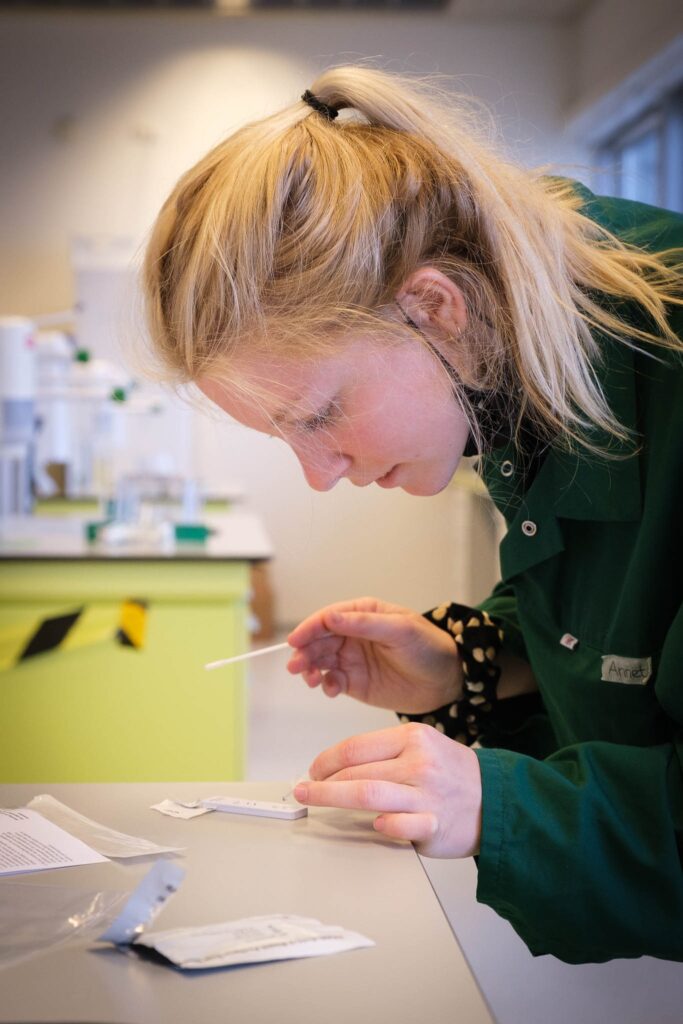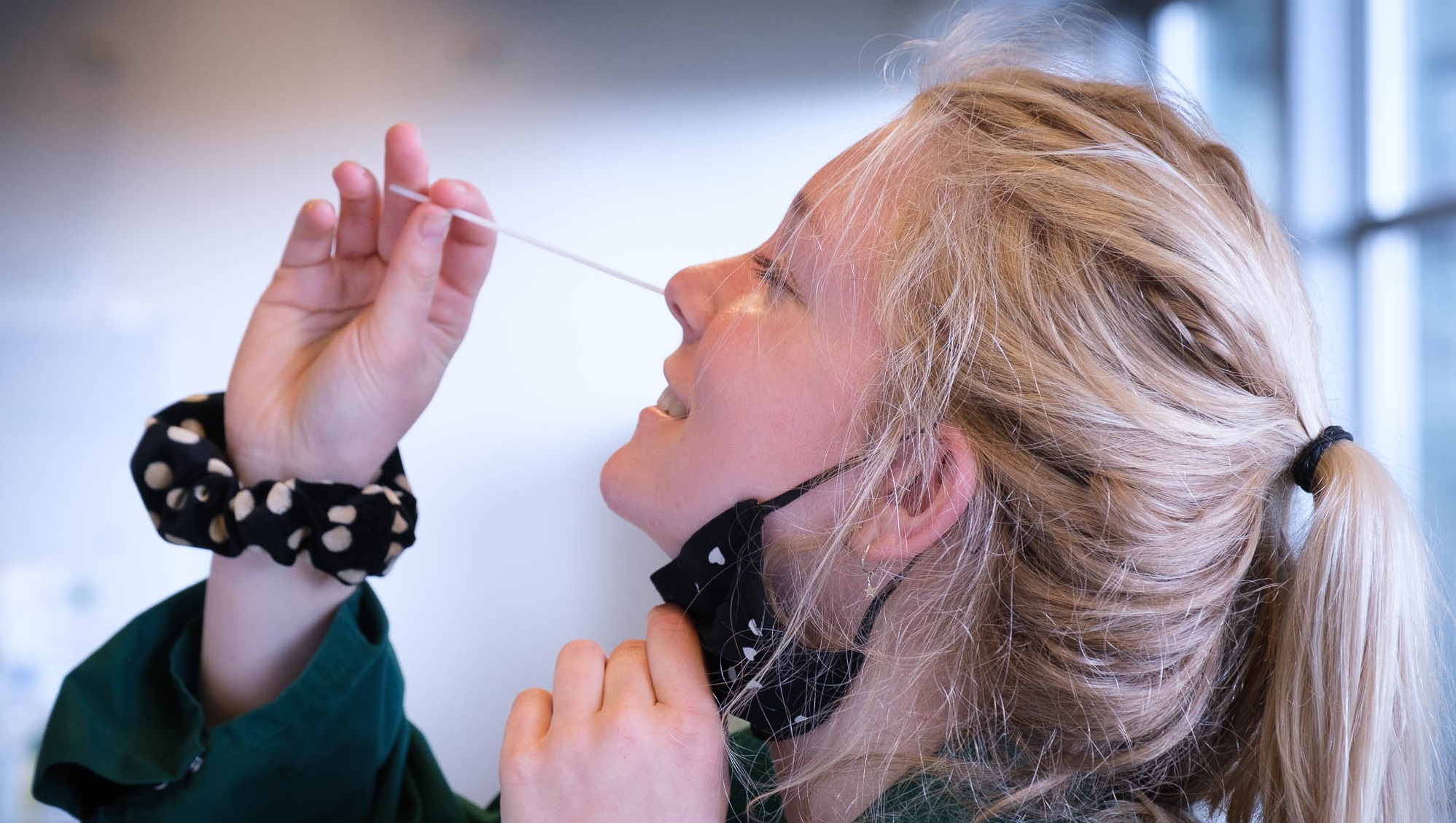The self-test is voluntary, programme director of Nutrition and Health Rolf Marteijn explains. But none of the participants of the Human Infectious Diseases practical decline to participate. The practical is done. The test is the dessert. A fitting one, as lecturer Gorben Pijlman (Virology), has just had the students analyse a small sample of the protein contained in the coronavirus spikes. The British variant.
With this experiment, Marteijn hopes to get some experience in self-tests for students. In period six, the tests are to make more education on campus and multi-day field trips possible. In such cases, students will be able to take a free self-test at home. The test is not mandatory, Marteijn underscores. ‘It is not an entry requirement for education. Testing is voluntary, but we do promote it.’
It is quite strange to be doing this to yourself
Annet Clerx, bachelor Nutrition and Health
Annet Clerx, a bachelor of Nutrition and Health, carefully studies the user instructions before getting started. She has already had a PCR test at the GGD (Public Health Services). This is different. ‘It is quite strange to be doing this to yourself.’ This swab, for example, is inserted into the nasal cavity horizontally and not vertically as is done at the testing facility. And nowhere near as deep, only 2.5 cm in. Nonetheless, a tear rolls down her cheek.

It is a reflex. ‘It doesn’t hurt’, she says. ‘The one the GGD did was much deeper.’ She awaits the result. One bar means you’re safe, a second bar means there is cause for concern. The control bar develops rapidly. After 15 minutes, no second bar appears, meaning she is not contagious. All the participants record the same result today.
This still does not guarantee that no one has the virus. Marteijn: ‘Especially if you have no symptoms and are not in quarantine, this test serves as an extra precaution to identify the so-called asymptomatic carriers.’ Most of them, at least, as these Roche self-tests are approximately 80 % reliable.
Test bar
Pijlman has an idea. Will the test respond to the virus protein that the students made during the practical? A test is quickly conducted, but no control bar appears. Disappointing, but understandable. The protein fragment made in the lab is just a small part of the entire spike protein. The self-test apparently responds to other parts of the protein.
Nonetheless, Marteijn’s experiment was successful, as is shown in the small survey the students take afterwards. The test is rated positively for user-friendliness and ease. With a side-note: this is not a typical student population. The students (all of them female) have some laboratory experience. Marteijn wants to do some tests in the field. Will the test be as easy to use in a tent during a multi-day field trip in less forgiving temperatures?

 Photo: Guy Ackermans
Photo: Guy Ackermans